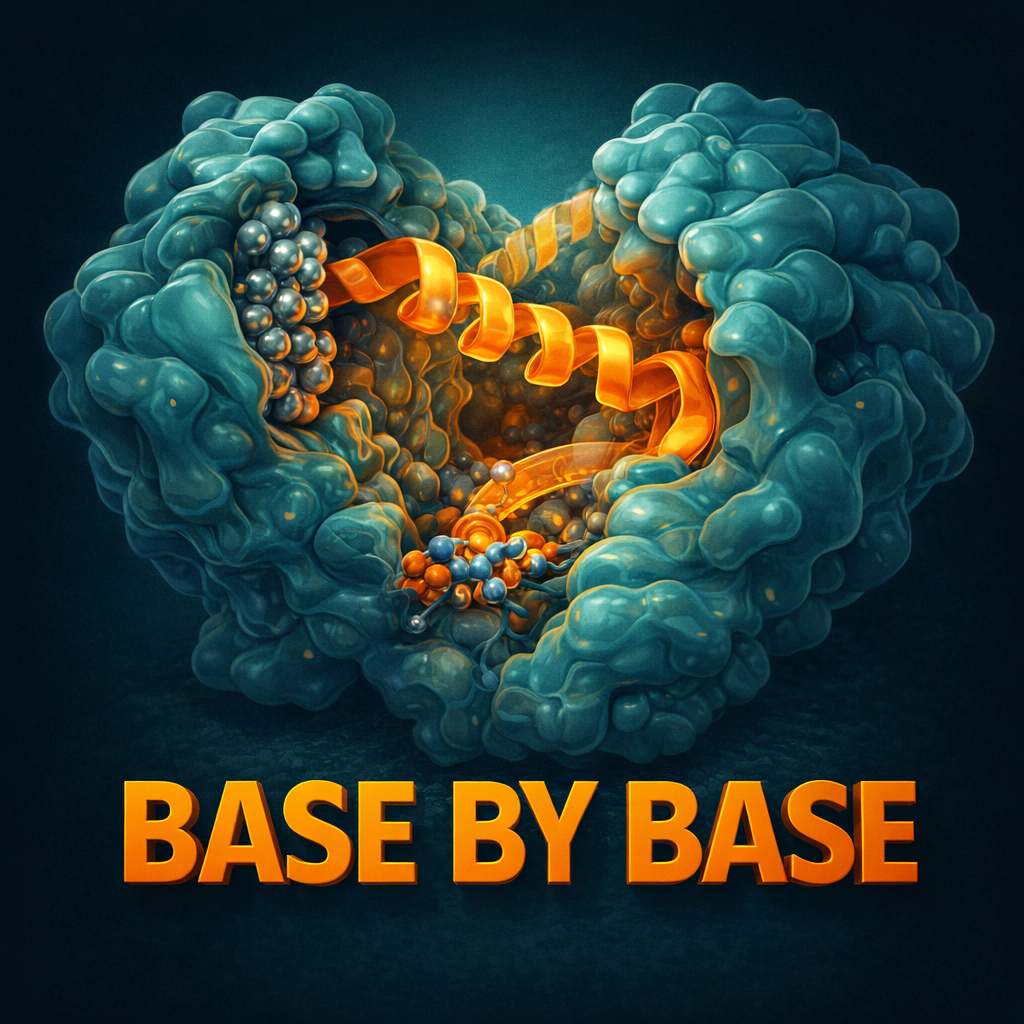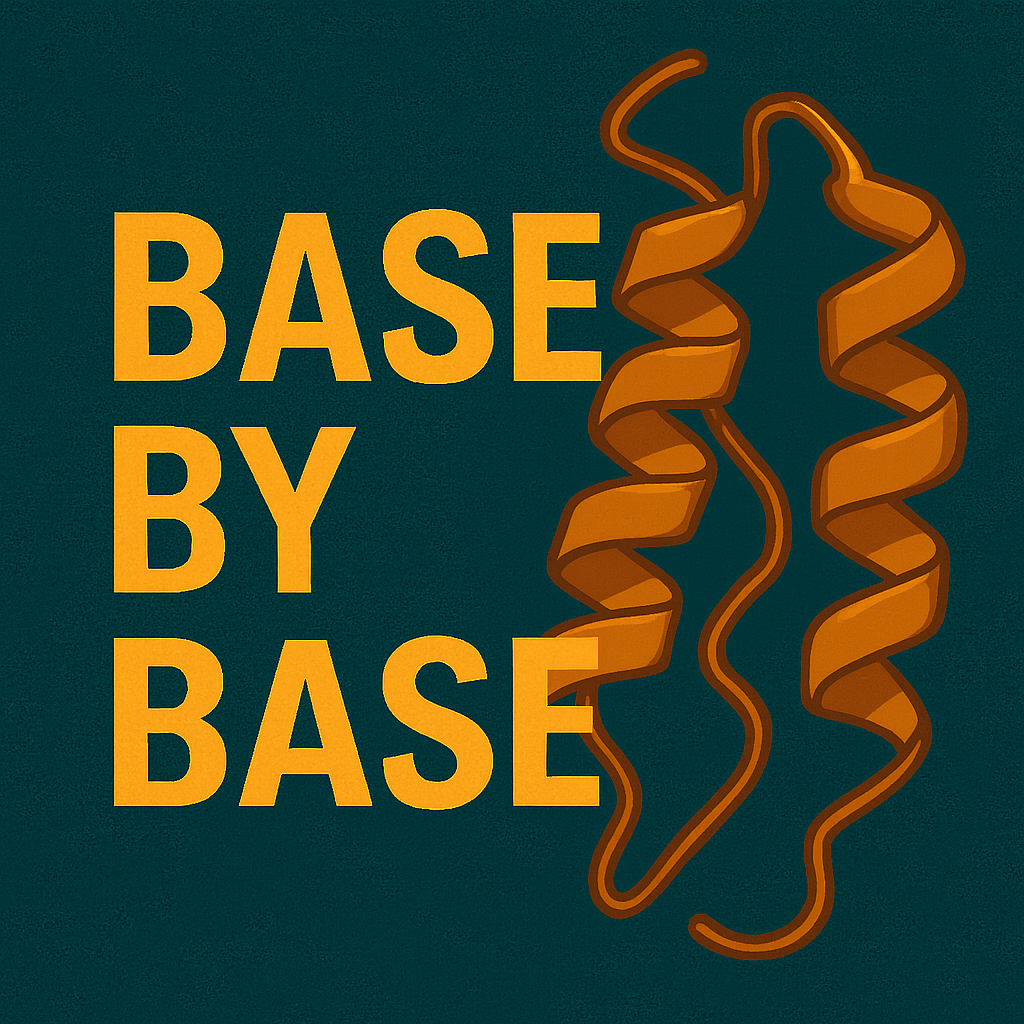Show Notes
️ Episode 44: Proofreading Precision — Unveiling the Cryo-EM Mechanism of Human DNA Polymerase ε Holoenzyme
In this episode of Base per Base, we delve into a groundbreaking study by Wang et al. (2025) in PNAS that illuminates the molecular choreography of the human leading-strand DNA polymerase ε (Polε) holoenzyme during mismatch proofreading. By combining in situ mismatch generation with high-resolution cryo-electron microscopy, the research captures authentic intermediates of the Polε–PCNA complex as it recognizes, backtracks, and excises replication errors, offering an unprecedented view of this essential fidelity mechanism.
Key highlights: The authors reveal that a primer containing a preformed mismatch is blocked from accessing the exonuclease site when PCNA is bound, underscoring the necessity of generating the mismatch within the polymerase active site; upon in situ synthesis of a mismatched nucleotide, three distinct proofreading states—mismatch-locking, polymerase backtracking, and mismatch-editing—are captured, showing an extended unwinding of six base pairs and out-of-register base pairing that guides the primer terminus into the exonuclease channel; detailed structural analysis uncovers how the PCNA sliding clamp imposes steric constraints that drive DNA translocation and how the unique P-domain of Polε contributes to duplex melting and primer repositioning; these findings challenge previous models derived from preformed mismatches and clamp-free systems by demonstrating a processive, clamp-retained proofreading pathway.
Conclusion: This study inaugurates a new paradigm for understanding replicative fidelity by capturing the full proofreading cycle of a DNA polymerase–clamp holoenzyme in near-physiological conditions. The insights into PCNA’s role and P-domain dynamics promise to inform future research on replication errors and their links to cancer and genetic disease.
Reference:
Wang, F., He, Q., O’Donnell, M. E., & Li, H. (2025). The proofreading mechanism of the human leading-strand DNA polymerase ε holoenzyme. Proceedings of the National Academy of Sciences, 122(22), e2507232122. https://doi.org/10.1073/pnas.2507232122
License: This episode is based on an open access article published under the Creative Commons Attribution 4.0 International license (CC BY 4.0). https://creativecommons.org/licenses/by/4.0/




